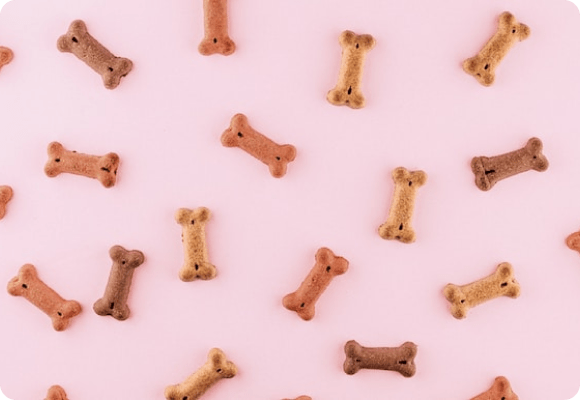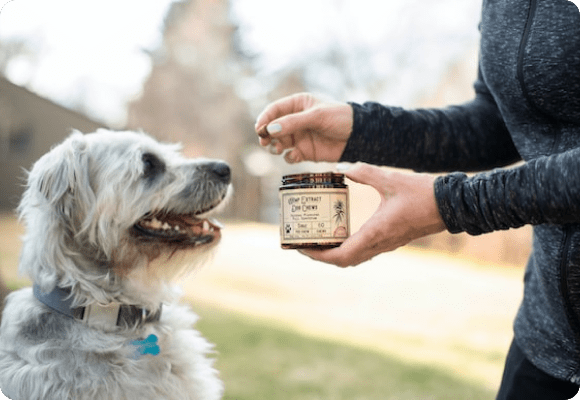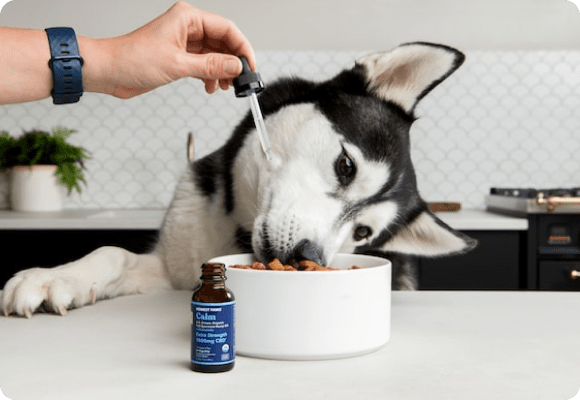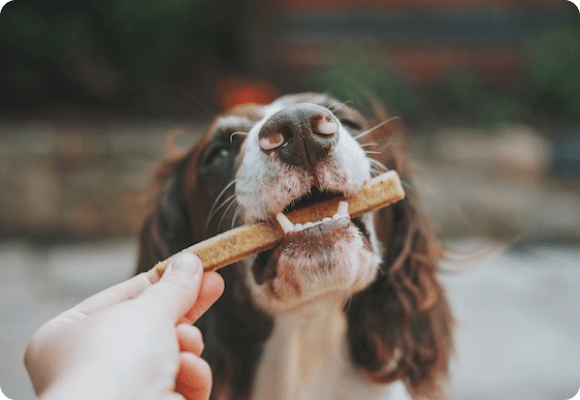Akita Dog Breed Facts: History, Health Traits, and Characteristics

Table of Contents
Akita Breed Card
Akita Breed Overview
Group
Working Dog
Height
24-28 inches tall
Breed Recognition
Yes
Weight
70–130 pounds
Country of Origin
Japan
Personality
Affectionate, independent, protective, loyal
Lifespan
10-14 years
Shedding
High
Akita History
The Akita is a large, powerful dog that originated in the mountainous regions of Japan. This breed was believed to be developed from crosses between native Japanese dogs and other Asian breeds, including the Shikoku, Kishu, and Kai Ken.
The name Akita is derived from the ancient province of Akita, where the Kishu originated. This region is located near the Sea of Japan in central Honshu island. The first recorded mention of the breed dates back to around 300 BCE when they were mentioned in an old Japanese text called “The Record of Ancient Matters.” In Japan, these dogs were used as hunting dogs as well as guard dogs.
The Akita was recognized as a breed by the AKC in 1972. There are two distinct types of Akita; those with short coats called “Japanese” and those with long coats called “American.”
In 1938, Helen Keller was the first to import an Akita Inu into the United States. This female dog was mated with a male German Shepherd Dog, resulting in the first generation of American Akitas.
The Akita Inu is one of six native Japanese breeds recognized by the FCI (Fédération Cynologique Internationale) standard for its country of origin and other international standards such as the AKC standard for dogs registered in America. Other native Japanese breeds include the Shiba Inu, Kishu Inu, Kai Ken, and Hokkaido Dog, among others.
Cost ✅
COST LEVEL
Low End: $500
High End: $1500
Akita Physical Traits
General Appearance💡
The Akita Inu is a large, powerful, squarely-built dog with a thick coat. The head is large with a broad skull and deep muzzle. The nose is black, and the eyes are small-sized and almond-shaped.
The ears are triangular, hang close to the head, and may be left natural or cropped short. Many Akitas have an undercoat and an outer coat that is long, straight, coarse, and dense. The tail is carried over the back and curled over it, always dipping to or below the level of the back. The Akita Inu’s feet are round with thick pads and nails that are dark in color.
The Akita is a big, powerful dog with a thick double coat. The outer coat is stiff and straight, while the undercoat is thick and soft. The color of the Akita is fawn (golden brown), red, or sesame (darker than fawn). The Akita has a broad head with a muscular neck, a deep chest, strong legs with well-developed thighs, and rounded feet.
The Akita’s tail is carried over its back in a sickle curve. Its ears are triangular and hang close to its head. The Akita’s eyes are almond-shaped and dark brown or amber in color.
Size & Weight ❤️
Height: 26-28 inches
Weight: 100-130 pounds
Height: 24-26 inches
Weight: 70-100 pounds
Coat & Color
Eye Color
Dark brown
Coat Color
Red, Sesame, Fawn, Brindle, Black, Brown, White, Silver
Coat Length
Medium
Coat Texture
Straight
Akita Temperament and Personality
The Akita has a calm demeanor and loves spending time with its owner. They are great family pets because they are intelligent dogs who love to please their owners. This breed makes an excellent watchdog because it will bark when it senses danger nearby but will not attack unless provoked by an intruder on your property.
Kid Friendly?
GOOD WITH KIDS
Bad Idea
Excellent Nanny
Yes, the Akita is a great dog for children. They are protective of their family and will bark to alert you of any dangers. The Akita is also very gentle with kids and will treat them as if they were their puppies.
The Akita may not be the best choice for families with small children as they can knock over toddlers by accident. They can also accidentally hurt a child if they get too excited in play or if they jump on them when they’re being petted. However, as long as you supervise your child around this breed, there should be no problems.
Good with Other Pets?
GOOD WITH PETS
Bad Idea
Friendly Socialite
No. The Akita can be aggressive toward other dogs. It may show aggression toward other dogs in its household, and it’s best not to place two Akitas together. The Akita is also aggressive with small animals and should not be trusted around them. The Akita may be okay with other pets if it has been raised with them from an early age, but this is not always the case.
Barks a Lot?
BARKING LEVEL
When Neccessary
Noise Maker
The Akita is not a barker. They are not likely to bark at the doorbell or another dog across the street. But they can be protective and territorial, so it’s important to socialize them early on with other animals and people. They will bark when they sense danger or discomfort in their territory before springing into action.
Can Be Left Alone?
LEFT ALONE
Likes Being Alone
Sepration Anxiety
Yes, the Akita can be left alone, but it’s important to understand what can happen if you do. However, if you try to leave your Akita for long periods, it will likely become restless and destructive until you return. This means that if you go out of town, someone must stay at home with the dog.
If you have no choice but to leave your Akita alone for an extended period, make sure that he has plenty of toys and chew bones to keep them occupied while waiting for your return. A good idea is to crate train your dog so that they have their own “room” where they can retreat when they get bored or anxious about being left alone.
Akita Training
Training an Akita means first finding ways to make your dog feel safe and secure with you. You should never punish your dog when they misbehave or show aggression; instead, find ways to reward them for good behavior so that they understand what is expected of them. For example, if your dog jumps up on people or greets them by barking too loudly, you should reward them when they sit calmly at their feet instead.
You’ll first want to get your dog used to being handled by people they don’t know. This will make it easier for people to take care of them when you’re not around. Start by taking him outside or to another room where you won’t be disturbed by other people and pets.
Then, hold onto their collar and gently stroke their back with your other hand so that they get used to having someone touch them without being startled or upset about it. After several sessions like this, try sitting down with them so that they can learn that humans don’t always mean harm when they touch them (or even move toward them).
The next step is teaching your dog commands like “sit,” “stay,” and “down.” You can use verbal cues such as “sit” and hand motions like pointing at the floor for these commands, but if your dog doesn’t respond to these cues, you may want to try using a clicker. This small plastic box makes a clicking sound when you press on it; when paired with treats, the clicker signals your dog that they have done something right and gets them excited about learning new things.
Akita Needs
Akitas need plenty of exercise and mental stimulation. A fenced yard is a must for this breed, as they are escape artists! Akitas are also known as “The Big Quiet Ones” because they tend to be quiet, dignified dogs.
They do not like being teased or pestered with commands. They also tend to be quite independent, so training may be more challenging than with other breeds. Akitas can live in apartments if they get enough exercise, but they prefer smaller homes with yards and less noise.
Nutritional Requirements
FOOD MOTIVATED
Picky Eater
Voracious Eater
Akita puppies need high-quality food that is appropriate for the growth stage they are in. An Akita puppy can be fed good quality puppy food or good quality adult dog food. It’s best to feed them twice a day until they are 12 weeks old, then once a day after that.
When your Akita reaches adulthood, they have to be fed 1 to 2 cups of food daily. In addition, adult Akitas should have access to clean water at all times.
Some Akitas may have problems with bloat (a condition where the stomach twists and causes death). Feeding several small meals throughout the day instead of one or two large ones can help prevent this from occurring.
Exercise & Activity Levels
ENERGY LEVEL
Couch Potato
Go-All-Day Stamina
The Akita is a very active dog and will need plenty of exercise to keep them happy and healthy. Daily walks are essential, but a fenced yard or wide-open space where they can run freely is even better. The Akita is not recommended for apartment living because they require a lot of exercise and room to roam.
Akitas love water and may enjoy swimming, but it’s important that you bring your Akita inside after swimming as they can develop ear infections if they stay wet too long.
They also love to play in the sun; owners should ensure the dog doesn’t overdo it since this breed has sensitive skin and can easily get sunburned if exposed to the sun for long periods.
Grooming Needs
SHEDDING LEVEL
No Shedding
Shedding Machine
The Akita requires regular brushing and combing to maintain its coat. Akitas don’t require frequent bathing because their coats are naturally water-resistant. Bathe your Akita only when it becomes dirty or smelly, such as after swimming or playing outdoors in muddy conditions. You should also bathe your Akita if you notice they have gotten into something that may irritate its skin, such as chemicals or insecticides.
Brush your Akita’s teeth daily using approved dog toothpaste and toothbrush designed for dogs’ mouths; if necessary, make an appointment with your veterinarian or an animal dentist for oral care beyond brushing at home.
Akita Average Lifespan
The average lifespan of the Akita is 10 to 14 years. However, Akitas can live as long as 18 years with good care.
Commom Health Problems
- Hip dysplasia: Hip dysplasia is a genetic condition that affects your dog’s hip joints and causes pain and lameness. Dogs with hip dysplasia often need surgery to fix the problem, and many will live happy, comfortable lives if they receive surgery early enough.
- Skin problems: Skin issues can result from allergies or infections such as yeast infections or bacterial infections. Some dogs will also have skin problems related to their coat type or length.
- Eye problems: The Akita is particularly prone to eye problems such as cataracts due to their large eyesight requirements and heavy coats, which can prevent the eyes from getting enough oxygen.
- Hypothyroidism: Akita’s are prone to hypothyroidism, a condition where their thyroid glands don’t produce enough hormones. This can cause many problems, such as weight gain, lethargy, and hair loss.
- Allergies: The most common allergy in the Akita breed is atopy which is caused by an overactive immune system that attacks environmental allergens such as pollen and dust mites. Atopy symptoms include redness, itching, skin inflammation, sneezing, runny nose, itching eyes, and ear infections.
Recommended Health Tests
- Hip evaluation
- Thyroid evaluation
- Ophthalmologist evaluation
Tips for New Akita Owners
If you’re thinking about bringing an Akita into your home, here are some tips to help you get started.
Tip 1
Find a reputable breeder: There are many reputable breeders, but finding one can be difficult if you don’t know the things to look for in one. A good breeder will answer your questions about the breed, provide references from previous customers, and, more importantly, prove that all of their dogs have been bred according to AKC standards.
Tip 2
Get Puppy/Dog Products in Advance: It’s important to ensure you have everything you need for your new puppy/dog before they arrive home. This includes food and water bowls, toys, treats, leashes, and collars. You should also know how much exercise your puppy will need each day and any additional training she might require.
Tip 3
Buy toys that challenge your dog mentally as well as physically: A bored Akita may start chewing on furniture or other household items because he’s bored — and this can lead to destructive behavior if not addressed quickly. Make sure your Akita has plenty of toys that will challenge his mind and body so that he doesn’t get bored and start chewing on your shoes.
Tip 4
Make an Appointment With Your Vet: One of the most important things to do before bringing home a new dog is to make an appointment with your vet. You’ll want to set up a time for vaccinations, spay/neuter surgery, and any other medical treatment that might be required during their first few weeks of life with you.
Akita Similar Breeds
– Hokkaido
– Kai Ken
– Kishu Ken
Akita Supplies You Need
When you get a new puppy or dog, there are a few things that you will need to purchase for them.
Dog Brush: A good brush for your Akita is essential. You want one with long metal pins that can reach through all of the furs, so you can get out any tangles before they become too big.
Dog Leash: An Akita needs to go outside at least once daily to relieve themselves and get some exercise. A leash will allow you to take your dog outside safely, but it is important that you don’t leave them unsupervised while they are on the leash. You should also ensure that your dog doesn’t chew on the leash, as it could become dangerous if they swallow any pieces of it.
Dog Collar: A good collar will help keep track of your Akita when you take them outside, but it can also protect them from getting lost if they slip out of their leash! Collars come in all shapes, sizes, and colors, so pick one that you think will look good on your dog and ensure it fits properly. Some owners like to use collars made of leather or nylon, while others prefer collars with an ID tag attached.
Food and water bowls: Akitas need two big bowls to hold their food and water. The bowls should be at least 4 inches deep. They also need sturdy bowls that won’t tip over easily.
Best Dog Beds for Akitas


Best Dog Food for Akitas


Best Dog Supplements for Akitas


Akita Fun Facts
If considering an Akita mix dog, read these fun facts.
Fun Fact 1
The Akita is considered one of the oldest breeds of dog from Japan, where it was first bred as a hunting companion until World War II.
Fun Fact 2
The breed is named after Akita Prefecture, where it originated. It is one of six native Japanese breeds of dog recognized by the Japanese government along with Shiba Inu, Shikoku Inu, Kishu Inu, Hokkaido Dog, and Kai Ken.
Fun Fact 3
The AKC recognized the Akita in 1972 as a member of the Working Group.
Why Trust Us?
This article was written by pet parents, for pet parents, and reviewed by our expert veterinary panel. We understand you want to ensure you are only using the best products to support your pet’s health and happiness. At onevet.ai our mission is to provide you with the most up-to-date information and resources you need on the products you buy for your pet.
Our specialized content team of writers, reviewers, and veterinarians analyzes all of the information for you and presents it in an easy-to-understand format. We independently research and test the best products so you can make an informed decision since your pet only deserves the best.





















